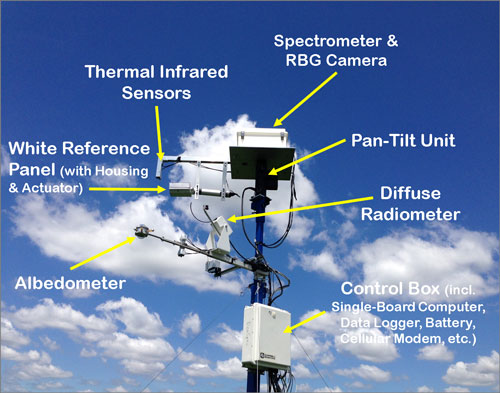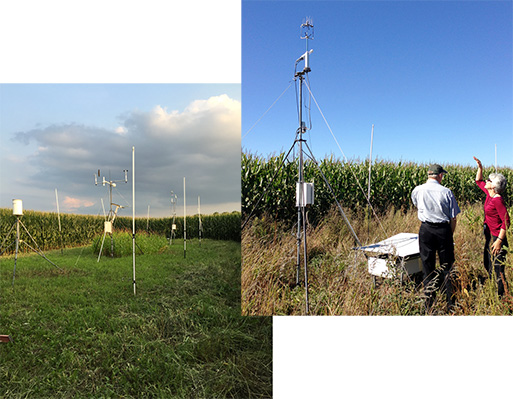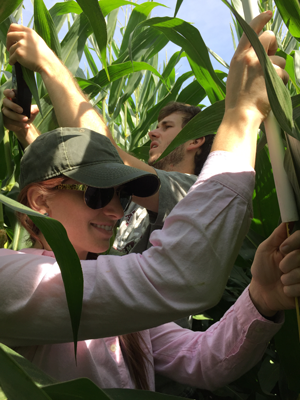Data
We collect a wide range of data types including remotely sensed data, meteorological measurement, and biological data to study how plants respond to their surrounding environments and how they contribute to climate.
Remotely Sensed Data
Remotedly sensed data includes two distinctive spectral regions: optional and infrared regions. Optical data refers to visible light from 0.4 to 0.75 µm that is reflected by land surface (e.g., plants and soil). Infrared data refers to invisible radiation with two spectral ranges. From 0.75 to 2.5 µm, we collect radiation reflected by land surface. From 8 to 14 µm, we collect radiation emitted by land surface and sky. Both optical and infrared data are collected from dawn to dusk throughout the growing season.
- Hyperspectral reflectance
- Direct and diffuse incoming radiation
- Albedo (or total incoming radiation)
- Infrared temperature (sky and land surface)
- True color canopy photos

Meteorological Data

Meteorological data is collected using the eddy covariance system and associated instruments. We record measurements averaged over every 30 minutes throughout the year complying with AmeriFlux standards.
- Carbon flux
- Heat flux
- Air temperature
- Relative humidity
- Wind direction and speed
- Soil temperature and moisture (5, 10, 25, and 50 cm)
Biological Data
Biological measurements are 'must have' data for linking remotely sensed data to ecosystem properties and functions. Some plant measurements are relatively easy to collect frequently, such as plant height and leaf count. Measurements like biomass and leaf pigments are very time consuming, expensive, or sometime infeasible to collect multiple times across the season without disturbing the very ecosystem we are studying.
- Plant height (bi-weekly)
- Leaf count (bi-weekly)
- Leaf moisture (bi-weekly)
- Leaf cover (bi-weekly)
- Chlorophyll content (bi-weekly)
- Ancillary pigment content (once a year; diurnal)
- N and C content (bi-weekly)
- Leaf Area Index (LAI; every 2 weeks)
- Biomass (once a year)
